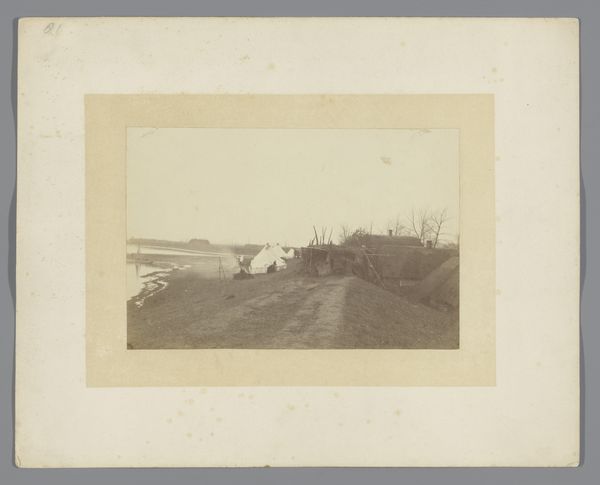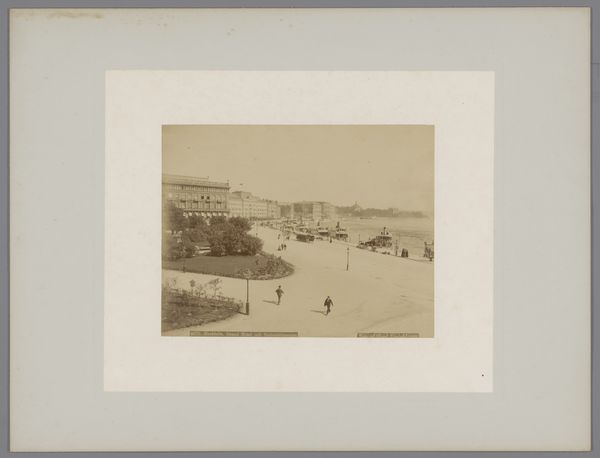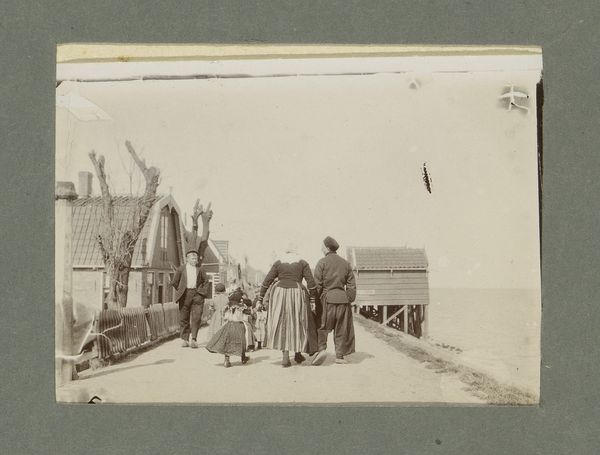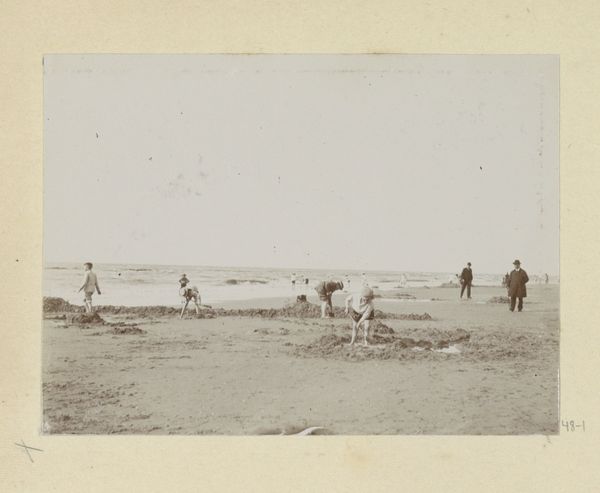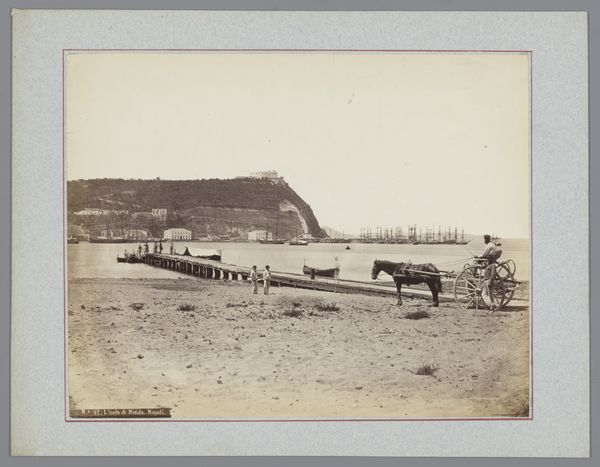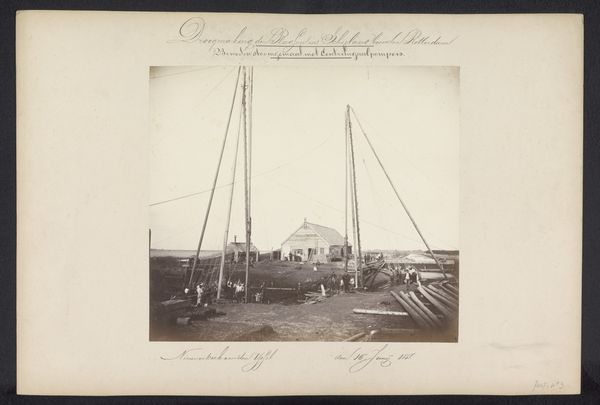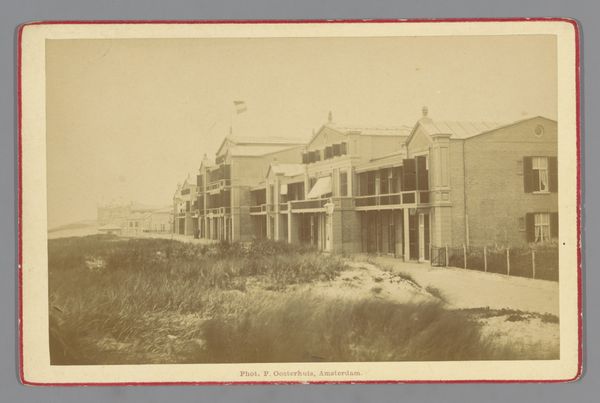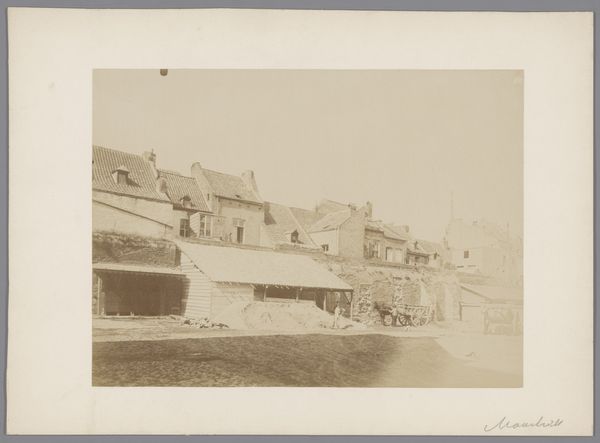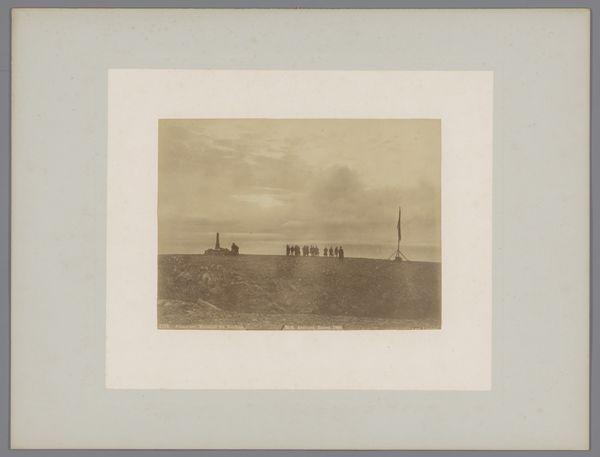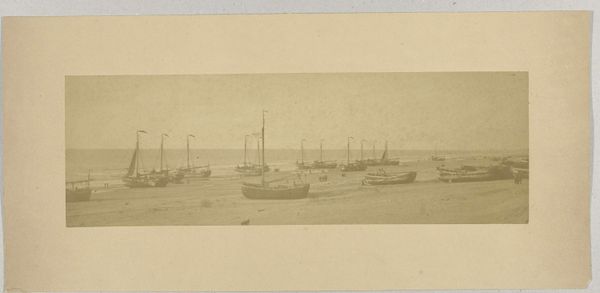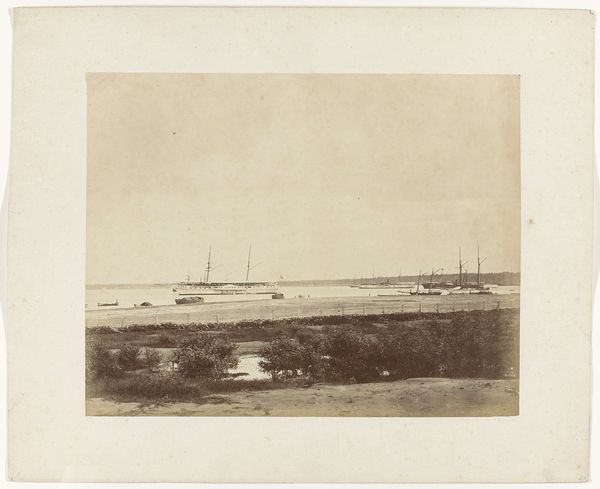
photography, albumen-print
#
landscape
#
photography
#
orientalism
#
albumen-print
Dimensions: height 225 mm, width 292 mm
Copyright: Rijks Museum: Open Domain
Editor: Here we have Hippolyte Arnoux's photograph, "People by the Bitter Lakes in the Isthmus of Suez," likely taken between 1863 and 1890, rendered as an albumen print. I find the composition so fascinating, dividing the scene between the land and a distant, pale horizon. What jumps out at you about this piece? Curator: Formally, observe the contrasting textures. The foreground presents a granular, almost chaotic earth, juxtaposed against the smooth, reflective surface of the water in the distance. This division is not merely representational; it’s a structural device. Editor: So, the physical qualities are more important than the location? Curator: Indeed. The tonal range, limited primarily to sepia variations inherent to albumen prints, is deployed to define spatial relationships. Consider how the artist utilizes light – it is not a dynamic play of chiaroscuro but a diffuse evenness that flattens forms. This evokes, or perhaps constructs, a certain austere aesthetic. The subjects, figures within the landscape, punctuate the scene, but how do they truly contribute? Editor: They give a sense of scale, but don't seem to interact with their environment. Curator: Precisely! They function more as compositional elements, serving to balance the asymmetry of the built structure on the right with the implied activity of the pulley system to the left. In essence, it’s less about documenting the activities around the Suez Canal and more about arranging forms within a rectangular frame to create visual equilibrium. Editor: I never considered reading a photograph quite like that before. Looking at its geometry reshapes its narrative. Curator: The photographic process itself dictates the aesthetic. Consider that, in doing so, we might discover meaning otherwise concealed beneath layers of context and preconceived narratives.
Comments
No comments
Be the first to comment and join the conversation on the ultimate creative platform.
